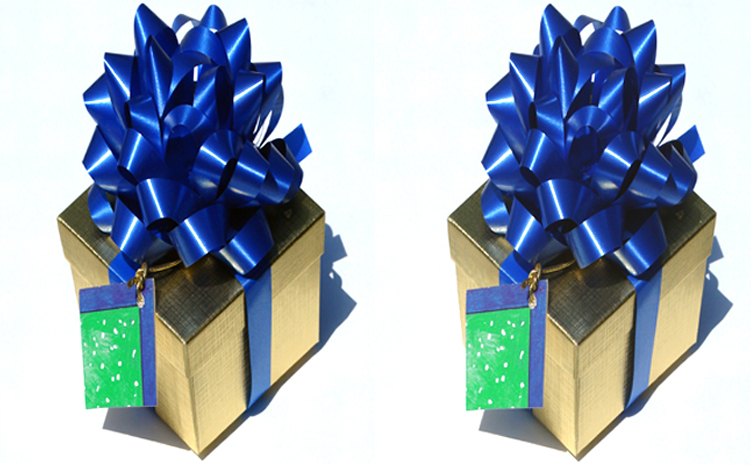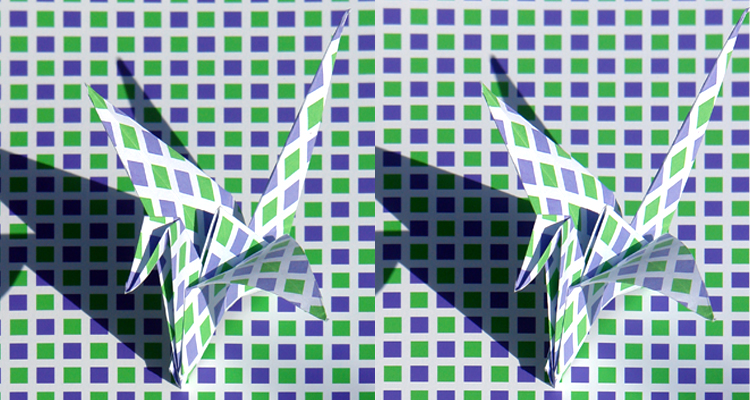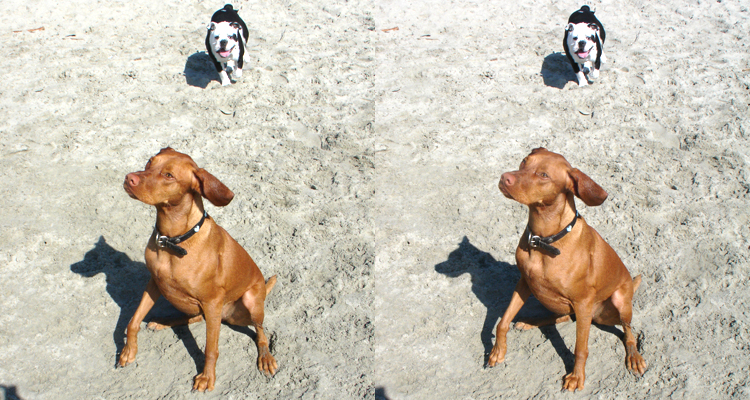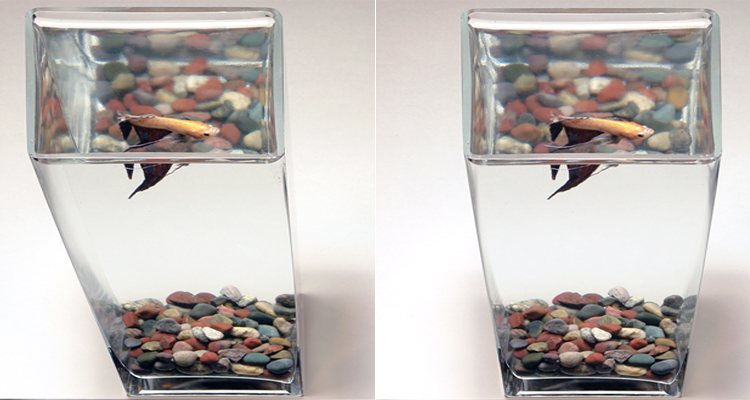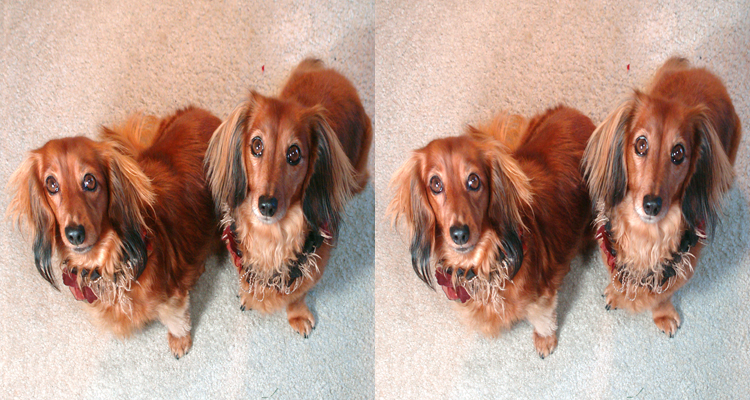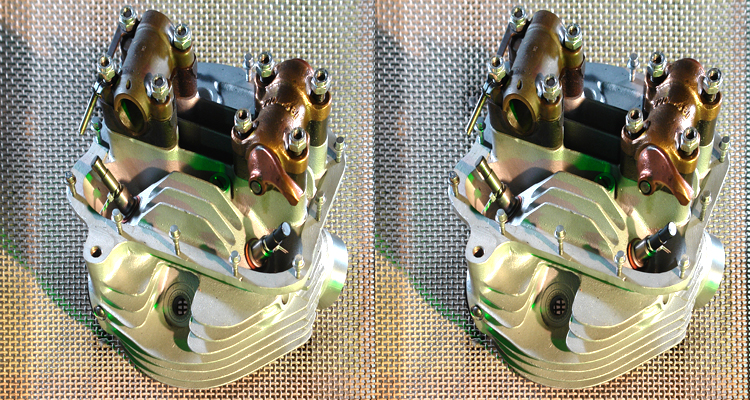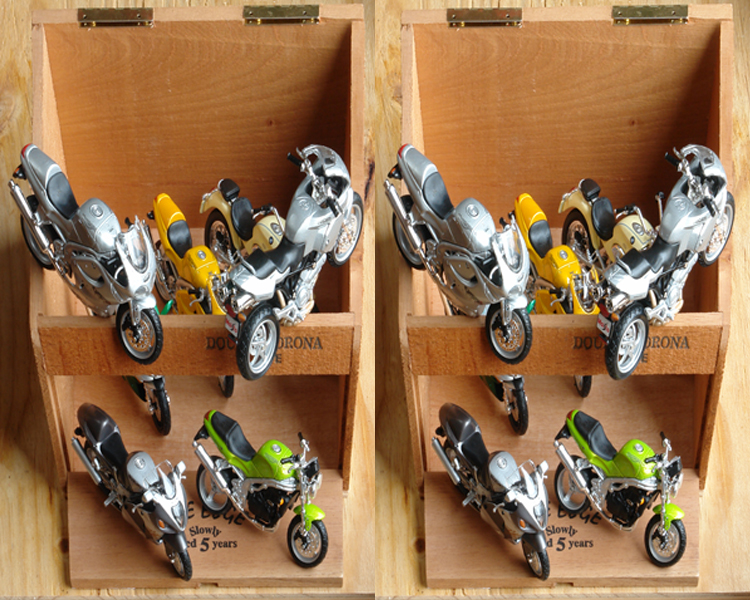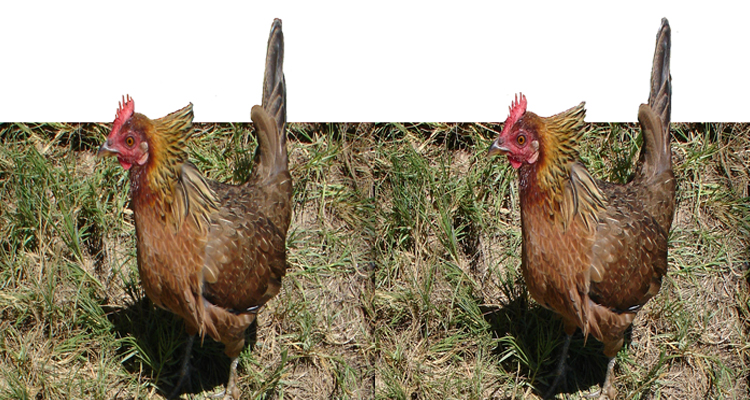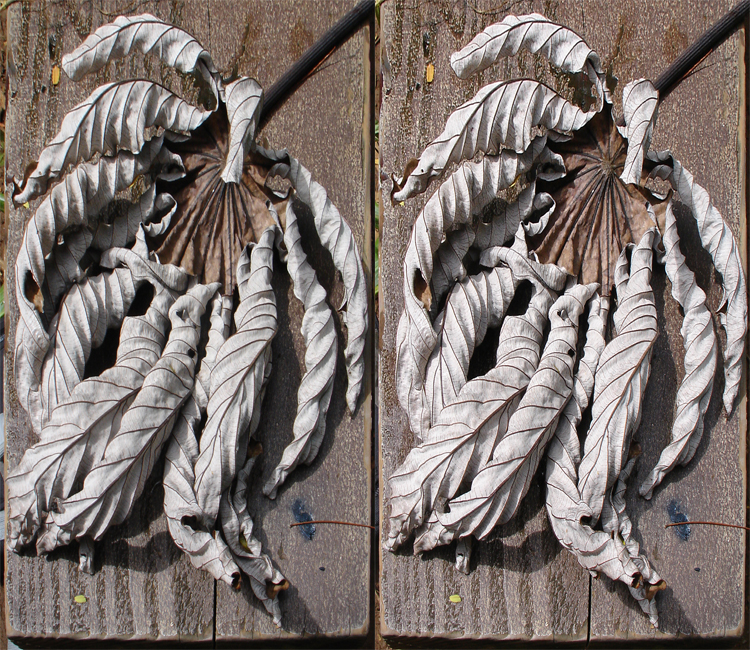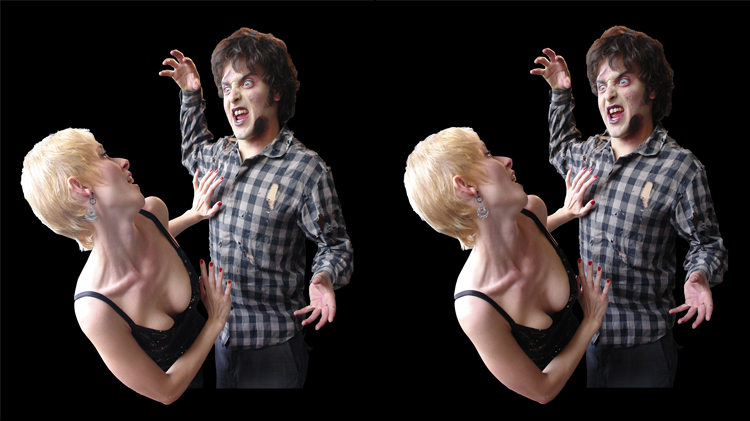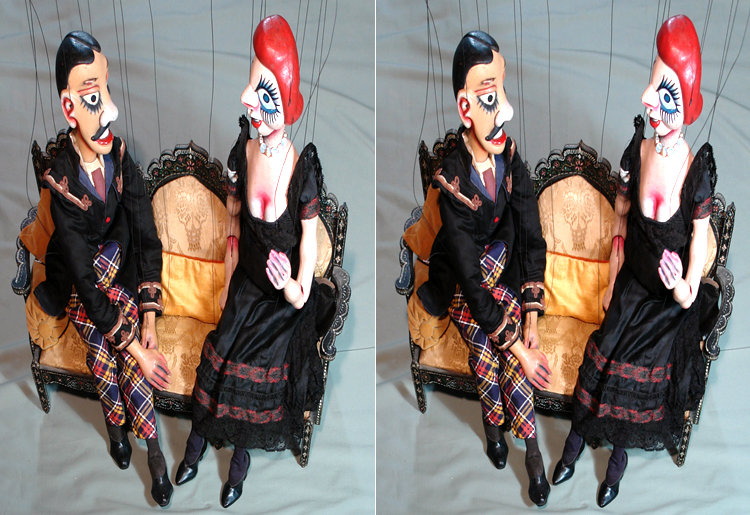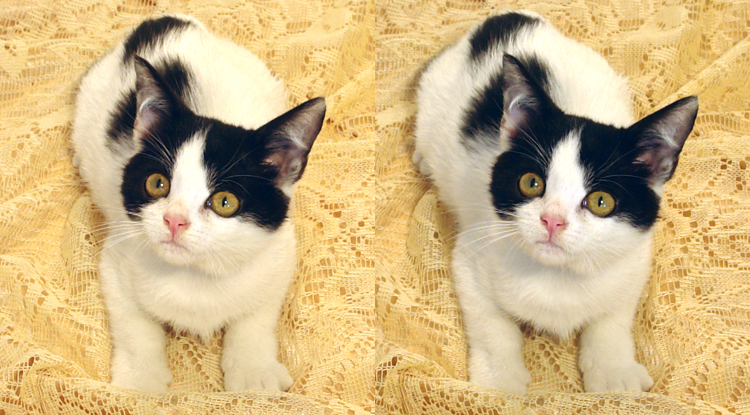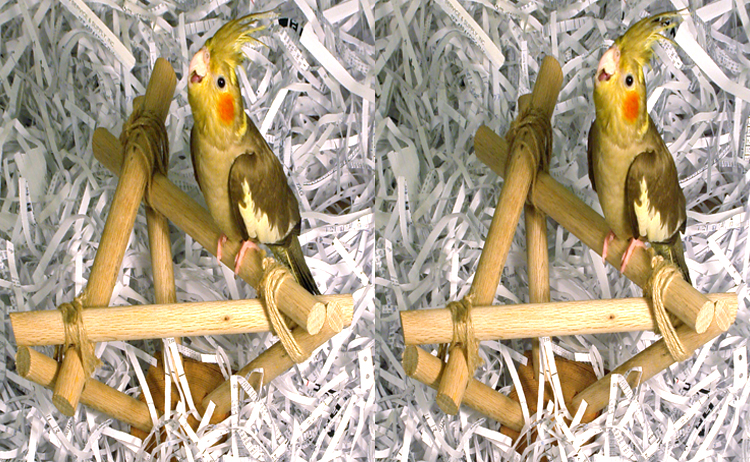A crossview stereo pair is placed as shown by the illustration above (by Tony Alderson). The image intended for the right eye is on the left and the image intended for the left eye is on the right. To merge a crossview stereo pair into a single 3-D images, you will need to cross your eyes a little and allow your gaze to glide horizontally. When they're properly lined up instead of seeing two images, you'll see three, all the same size. When you're reached that point the middle image will be in 3-D.
There are a few ways to do this, and some work better for some people than others:
One approach is to overcross your eyes, and as your focus slides back to normal, try to slow it down. After doing this a few times, you'll try to reach the merge point and hold it.
Another approach is to place your thumb on your nose, with you pinkie extended and pointing at the center of the stereo pair. Focus on your pinkie (to help you cross your eyes) and the move your gaze toward the stereo pair.
Some people have good success by trying to keep their focus constant but moving closer or farther away from the stereo pair.
Once you're successful with one, it just gets easier and easier. Like riding a bicycle, it's a learned skill you'll be able to do the rest of your life.
However, ..... keep in mind that some people will have no sucees no matter how hard or long they try. The ability to crossview is spectacular, but it's not for everyone. It's especially difficult for people with various eye impairments or other visual issues, such as one eye corrected for distance, the other for close up. If the thought of this doesn't appeal to you, please don't bother. If it starts to give you a headache, then stop, you can try again later if you want.
If you have a known tendency of your eyes drifting, crossviewing could strengthen that tendency. If that's the case then crossviewing clearly isn't for you.
Below are a number of crossview images. Good luck and enjoy. If you can do it and it's cool beyond measure, consider our new book.
